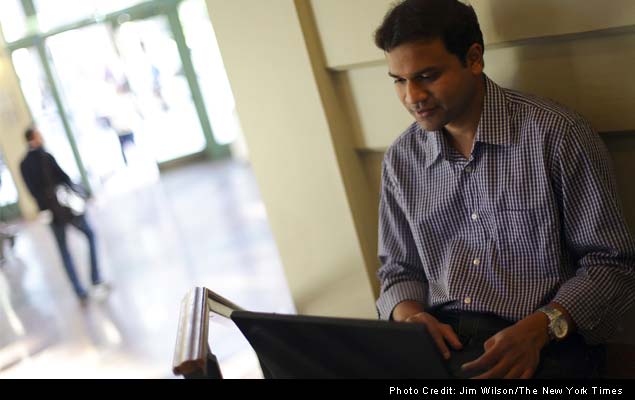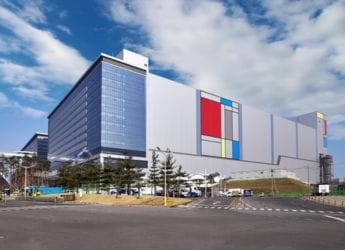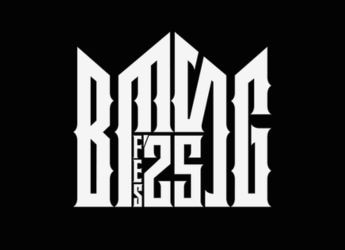- Home
- Others
- Others News
- Long wait for a green card could be ending
Long wait for a green card could be ending

Then, he waited for the U.S. government to decide if he could stay.
"I know this country better than my own country, and I still feel like an outsider," said Sant, 35, who received his Ph.D. from the University of Texas in 2006, and has been waiting for federal officials to approve his green card application for six years. "That's the thing that bothers me."
That is also the predicament of tens of thousands of workers here in the heart of the tech industry who were born overseas and educated in the United States. Though not living in poverty or in the shadows, as are migrant workers who are here illegally, they are nevertheless in a bureaucratic limbo while they wait in a long line for a green card.
Now, though, Congress is poised to end their uncertainty.
The Senate Judiciary Committee on Tuesday approved a broad overhaul of the nation's immigration laws on a bipartisan vote, and sent the measure to the full Senate. The bill would make it much easier for science, math and engineering graduates of U.S. universities to become permanent residents.
Crucially, it would also lift the limits on how many immigrants are allowed in from each country, which has meant that citizens of populous countries like India end up waiting far longer than others.
The provisions to ease the green card process enjoy bipartisan support, reflecting a stark reality: Nearly half of all engineering graduate students at U.S. universities are from abroad.
Technology companies, like Facebook and Microsoft, want to hire many more of them, which is why they have lobbied to make it quicker for them to get permanent residency. So has the Institute of Electrical and Electronics Engineers, a group that advocates for U.S. workers.
Still, not everyone is a fan. Mark Krikorian, executive director of the Center for Immigration Studies, a Washington-based research and advocacy group, who has testified against the legislation, said easy, unlimited access to green cards for math and science graduates could encourage the emergence of "visa mills," or schools established just to sell access to the United States.
Also, he said: "American young people with bachelor's degrees see these occupations distorted by large-scale admissions of foreign workers. That then changes their own decision making about what to do in the future."
The green card provisions have been obscured by the louder, more polarizing fight between industry and labor over foreign guest worker visas, known as H-1Bs. But they stand to have a far greater impact on the men and women who drive this industry.
Sant, like many of his friends, was drawn to the U.S. for higher education. In 2010, the most recent year for which data is available from the National Science Foundation, a government agency, 45 percent of master's and doctoral students in engineering were from abroad, up from 35 percent in 1990 and 24 percent in 1980.
At some universities, the share of foreign students is even higher. At Carnegie Mellon University, which has one of the most prestigious engineering schools in the world, 62 percent of engineering graduate students came from abroad, and at the Rochester Institute of Technology, 56 percent.
This year, at the University of Southern California, the figure is 68 percent, according to university officials.
Among those who come to study in this country, about 1 in 3 end up staying on temporary work visas, mainly through the H-1B program. An analysis by the Brookings Institution concluded that in 2010, 30 percent of those who were working on H-1B visas were former students at U.S. universities.
Their wait for permanent residency can be frustratingly long, depending on their homeland.
According to data from the U.S. Citizenship and Immigration Services, more than 150,000 of them have filed for green cards since 2010; nearly a third of them are from India, the largest single block.
Kartik Shah, 29, was among them. A native of Mumbai, he went to the University of Southern California, in Los Angeles, for a master's degree in electrical engineering. He graduated in 2007 and swiftly landed a job as a software engineer at Cisco's headquarters in San Jose, just south of here.
The company soon filed a green card application on his behalf, which it says it does for the vast majority of its H-1B workers. The government cleared his application, essentially ruling that his skills were needed. Then, it told him to wait.
So far the wait has been six years, and he has no idea when it will end. He is nervous about exploring other job options, for fear of losing his place in the green card line. (The draft bill would free up workers from their green card sponsors.)
Two evenings a week, he rides the bus an hour each way from his office in San Jose to the University of California, Berkeley, where he is working toward a master's in business administration. Perhaps, by the time he finishes, in the spring of 2014, his green card will be ready and he will be able to put his MBA to use.
Still, he is reluctant to pin his hopes on the bill now on the Senate floor. If the overhaul fails, it would depress him too much.
"It's very frustrating," he said. "Whenever we are hanging out with friends and this topic comes up, it's actually a very depressing topic."
His onetime roommate, Rushil Kadakia, 32, says he likewise is not losing sleep over what happens in the Senate. He and his wife, an engineer at Oracle, are both in line for a green card. They have a 6-week-old daughter at home, a U.S. citizen by birth.
"I'm taking everything with a grain of salt," he said. "I'm keenly following it, but I'm not optimistic."
He joked that maybe his daughter could eventually sponsor her parents. "Twenty-one years down the line," he said.
Sant, a native of Ahmedabad, in western India, came here to earn a master's degree, then a Ph.D. in electrical engineering, specializing in semiconductors. He got a job at a company making semiconductor equipment, published papers in academic journals and earned several patents.
His wife gave up her career as a surgeon back home in India when she came to this country as his bride; under current law, a spouse of a temporary visa holder is barred from working. The draft law would grant them work papers.
Going back home is not an option for Sant. His specialty is semiconductor equipment research, and not much of it happens in India. And anyway, he says, India has changed so much in the 13 years he has been away, and he has become so much more of, well, an American.
"I went to India last year. The whole culture is different. I don't relate to it anymore," he said. "I feel home is here."
© 2013, The New York Times News Service
Get your daily dose of tech news, reviews, and insights, in under 80 characters on Gadgets 360 Turbo. Connect with fellow tech lovers on our Forum. Follow us on X, Facebook, WhatsApp, Threads and Google News for instant updates. Catch all the action on our YouTube channel.
- Samsung Galaxy Unpacked 2025
- ChatGPT
- Redmi Note 14 Pro+
- iPhone 16
- Apple Vision Pro
- Oneplus 12
- OnePlus Nord CE 3 Lite 5G
- iPhone 13
- Xiaomi 14 Pro
- Oppo Find N3
- Tecno Spark Go (2023)
- Realme V30
- Best Phones Under 25000
- Samsung Galaxy S24 Series
- Cryptocurrency
- iQoo 12
- Samsung Galaxy S24 Ultra
- Giottus
- Samsung Galaxy Z Flip 5
- Apple 'Scary Fast'
- Housefull 5
- GoPro Hero 12 Black Review
- Invincible Season 2
- JioGlass
- HD Ready TV
- Laptop Under 50000
- Smartwatch Under 10000
- Latest Mobile Phones
- Compare Phones
- Honor Win RT
- Honor Win
- Xiaomi 17 Ultra Leica Edition
- Xiaomi 17 Ultra
- Huawei Nova 15
- Huawei Nova 15 Pro
- Huawei Nova 15 Ultra
- OnePlus 15R
- Asus ProArt P16
- MacBook Pro 14-inch (M5, 2025)
- OPPO Pad Air 5
- Huawei MatePad 11.5 (2026)
- Xiaomi Watch 5
- Huawei Watch 10th Anniversary Edition
- Acerpure Nitro Z Series 100-inch QLED TV
- Samsung 43 Inch LED Ultra HD (4K) Smart TV (UA43UE81AFULXL)
- Asus ROG Ally
- Nintendo Switch Lite
- Haier 1.6 Ton 5 Star Inverter Split AC (HSU19G-MZAID5BN-INV)
- Haier 1.6 Ton 5 Star Inverter Split AC (HSU19G-MZAIM5BN-INV)












